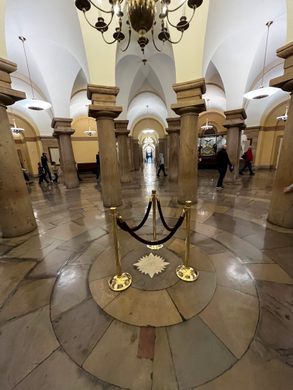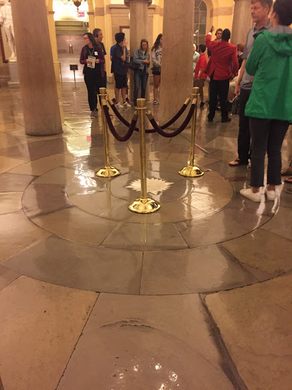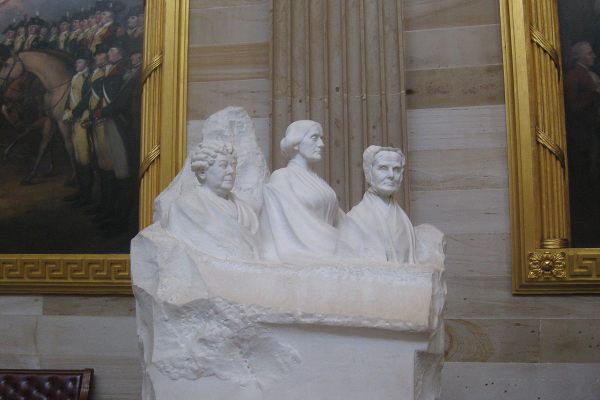District of Columbia Center Point
A little marble compass above George Washington's (empty) tomb in the Capitol marks where D.C.'s four quadrants intersect.
Urban planner Pierre L’Enfant designed Washington, D.C. on an orderly street grid divided into four quadrants, with numbered streets running north-south, letters going east-west, and diagonal avenues named for the states. The symbolic intersection of the four quadrants is the Capitol Building, which has marked the exact middle with a neat little marble compass that has been slightly worn down by two centuries of foot traffic.
Congress and the Architect of the Capitol originally intended to bring together a hallowed tomb directly beneath the marker, and reinter George Washington’s corpse from Mount Vernon to the symbolic heart of the capital city bearing his name. They designed the Crypt with a 10-foot-wide hole in the ceiling to illuminate the space with natural light and allow visitors in the Rotunda to peer down at the heart of Washington, man and municipality.
The Architect of the Capitol saw symbolic and practical benefits in the arrangement, and hoped that “a consciousness of the presence of even the lifeless remains of Washington within the walls of the Capitol would awe the most depraved, and check the emulations of passion, & political party. [And] his sage advice would reoccur to our minds, to heal all our political bickering, and make us like a band of brothers, united in love, and determined to preserve the interests of the Union.”
They should have checked with the widow Washington beforehand, however, because it turned out that Martha W. was perfectly happy with her family tomb at Mount Vernon. There would be no exhuming of George while she had something to say about it. Congress asked the family descendants again years later once Martha had herself passed away, but were rebuffed yet again by Mount Vernon proprietor John Washington.
John wrote back to congress that George and Martha rest “in perfect tranquility surrounded by those of other endeared members of the family. I hope Congress will do justice to the motives which seem to me to require that I should not consent to their separation.”
Lacking its presidential corpse, the Capitol crypt and tomb have been used as storage space for an assortment of miscellany over the years, including a Civil War bakery, bicycles racks, and now a handful of statues. The ceiling viewing port was also plugged ages ago to improve ventilation and to prevent the building’s massive second dome from collapsing under its own weight. Visitors were once allowed to place a foot in all four city quadrants at once (but not over a presidential tomb), but it’s now roped off to preserve the worn piece.
Although the marker is the center of the city’s streets and addresses, it is not the actual geographical center of L’Enfant’s 10-mile diamond. That less-celebrated spot lies in the driveway of the Organization of American States.
Know Before You Go
You can visit the centerpoint on the standard Capitol tour, which are available daily free of charge.
Community Contributors
Added by
Edited by
Plan Your Trip
The Atlas Obscura Podcast is Back!
































Follow us on Twitter to get the latest on the world's hidden wonders.
Like us on Facebook to get the latest on the world's hidden wonders.
Follow us on Twitter Like us on Facebook